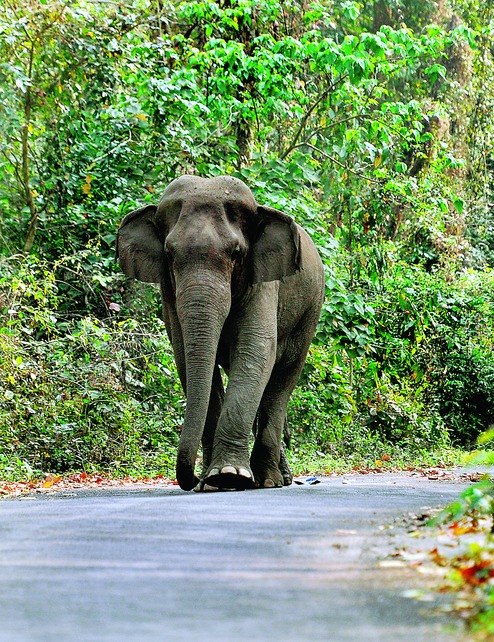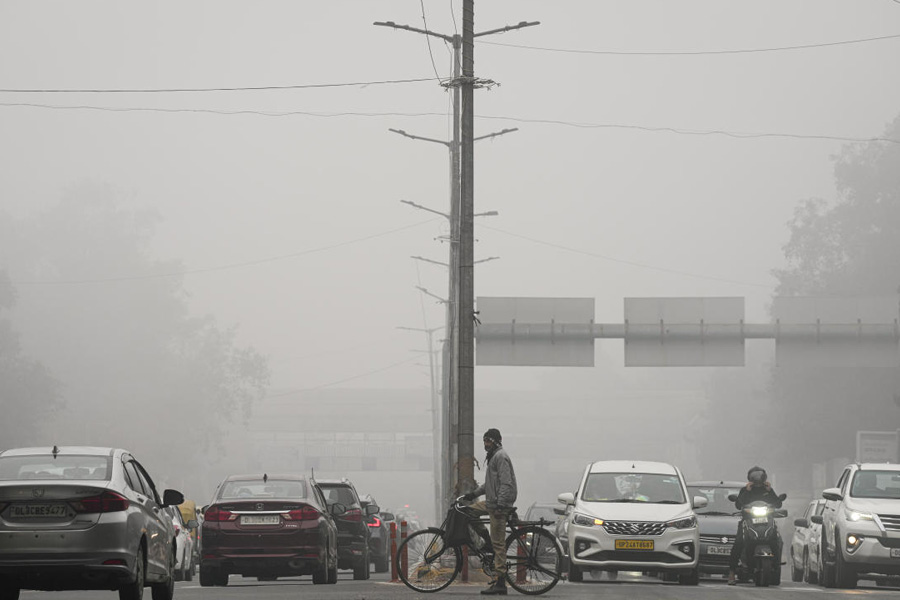
Guwahati, Aug. 12: The countrywide elephant estimation carried out this year has found 10,139 elephants in the Northeast.
The report, Synchronized Elephant Population Estimation India 2017, was released in New Delhi today by Union minister for environment, forest and climate change Harsh Vardhan, who launched Gaj Yatra in the national capital on World Elephant Day today, as a nationwide campaign to protect elephants.
The campaign is planned to cover 12 elephant-range states. Assam has the maximum number of elephants, 5,719, followed by 1,754 in Meghalaya and 1,614 in Arunachal Pradesh. The population of elephants in north Bengal has been included in the Northeast population.
A population of 27,312 elephants was estimated from 23 states in the country by the direct count method.
The present "first report" of the elephant population estimation 2017 presents results only from the direct count method.
Though a nationwide population census exercise for elephants is conducted every five years, this is the first time than an all-India synchronised elephant census was carried out.
The director-general of forests and special secretary, ministry of environment, forest and climate change, Sidhanta Das says in the report that for the first time, all states have agreed to adopt a uniform set of methodologies to map elephant distribution, estimation of wild elephant populations by direct and indirect (dung count) methods and assessment of the structure of the populations for their demographic health.
In the coming months, the final report will be released which will see refinement of results from the direct count method, analysing data from the dung count method, producing high resolution maps in a geographic information system (GIS) domain and compiling information on elephant population profile across various regions.
In Arunachal Pradesh, elephants are distributed over 22 forest divisions and 30 to 60 per cent of the elephant distribution area from each division was selected for sampling by the direct count method. A total of 139 sample blocks were randomly selected and enumerated in Arunachal Pradesh.
Analysis of the above indicated an overall elephant density of 0.23 elephants per square km in Assam.
In Assam, elephants are found in 36 forest divisions. A total area of 11,601 square kmwas sampled for block count direct method for the state and the elephant density of 0.38 animals per square kilometre was estimated for this state.
In Meghalaya, much of the elephant habitat area is under community forest. A total of 232 blocks were sampled in the state and the overall density was 0.16 elephants per square kilometre.
The report states that the results presented should be interpreted with caution.
"At this stage, comparisons should not be made between results from the 2017 census and the earlier 2012 census, the reason being that the earlier census results were based on a mixture of direct and indirect count methods as reported by different states. In particular, no trend information should be made for individual forest divisions or states from these results," the report says.
In 2017 there were major shifts in dry season habitat use by elephants in the south because of a severe drought in the previous year. Other population estimation methods (line transect direct count, camera trapping using a mark-recapture framework, DNA-based profiles and occupancy models) require substantial research and development and cannot be implemented within a short period across the country, it adds.











